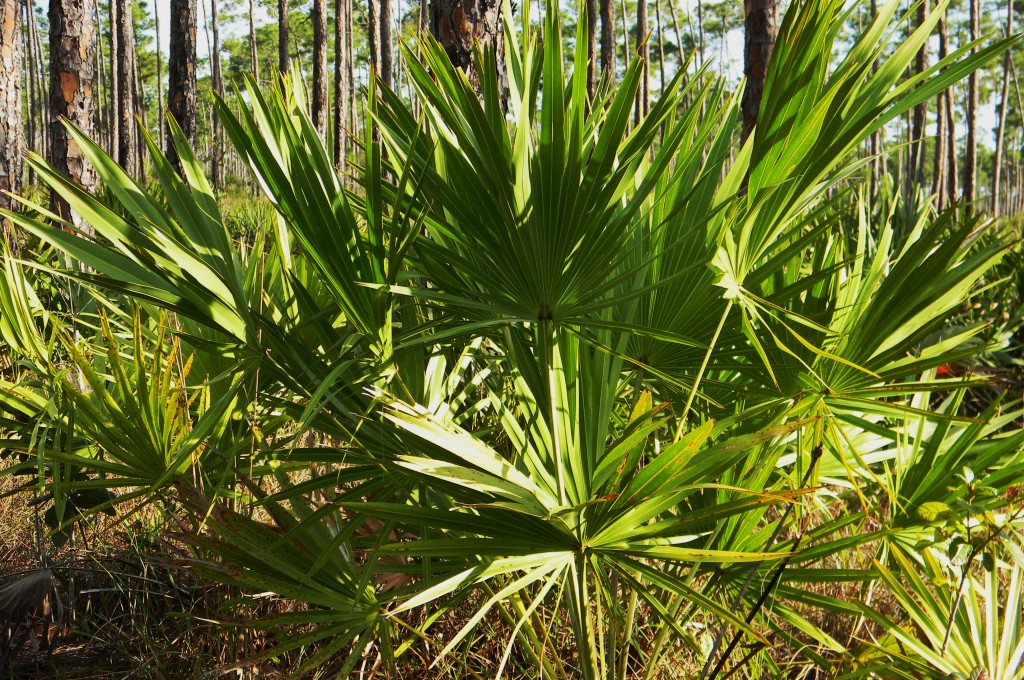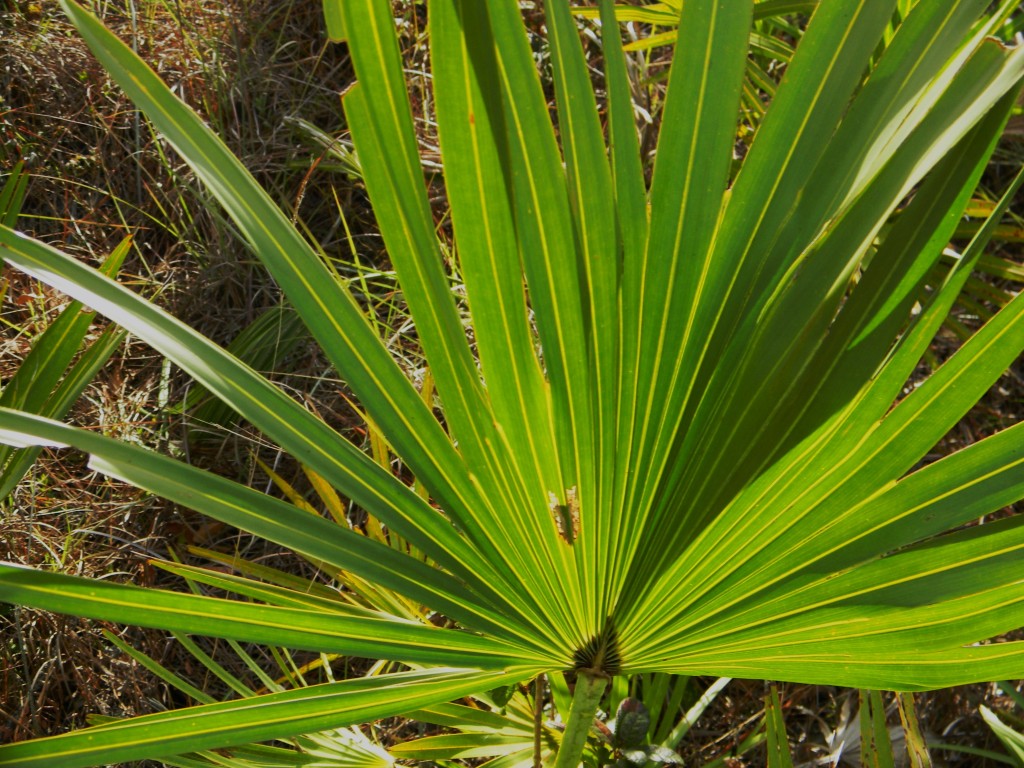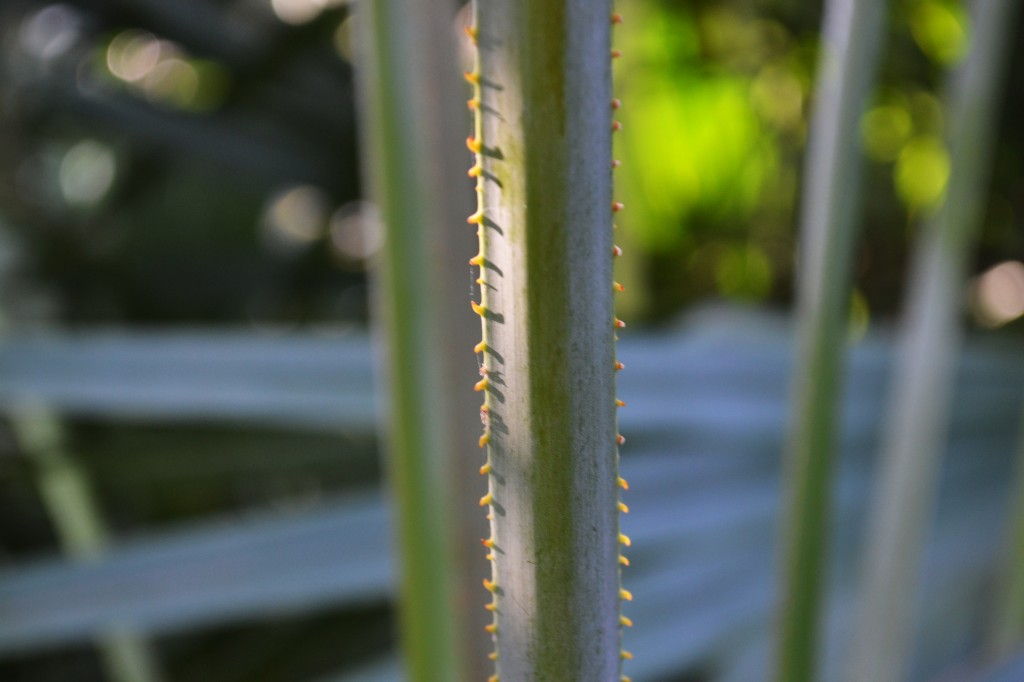Saw Palmetto
Serenoa repens
Plant Family: Palmae
Leaves: Palmate, light green, the segments are divided for most of their length, the petiole is saw-toothed with many small but sharp spines.
Bark: The trunk is often prostrate on the ground or it may be upright; old leaf bases often cover the trunk.
Flowers: Small, white, held in long linear clusters in the spring.
Fruits: Rounded, blue-black, from 1 to 2 cm; summer to fall.
Habitat: Saw Palmetto is probably Florida’s most common native palm, it is found throughout the state on sandy soils and in the understory of pine forests.
Growth Form: Saw Palmetto is often found in the pinelands as a shrub growing from a prostrate trunk, but in more open situations, such as along canals, or in hammocks, it may attain small tree status.
Key Feature: The saw-toothed petioles distinguish it from Sabal Palm. One does not walk through a Saw Palmetto understory wearing shorts!
Comments: Extracts from the fruits of Saw Palmetto are used to treat prostate disorders, although the effectiveness of such use is under debate in the medical community.



